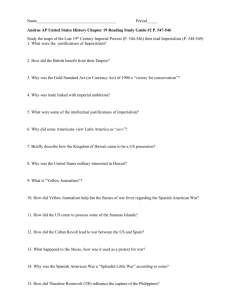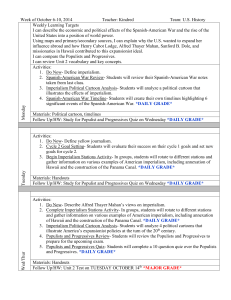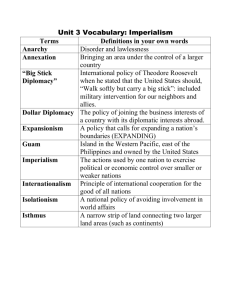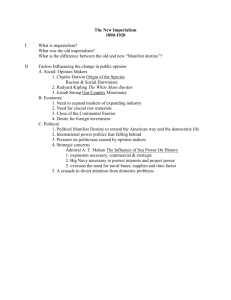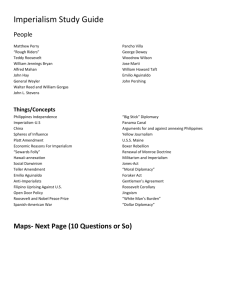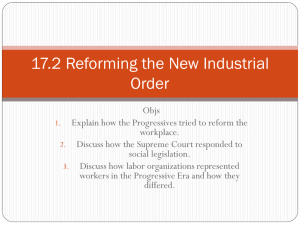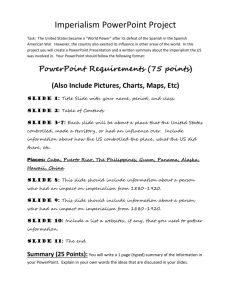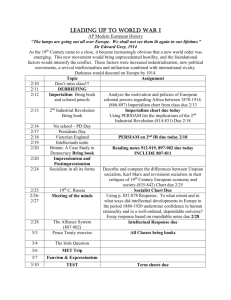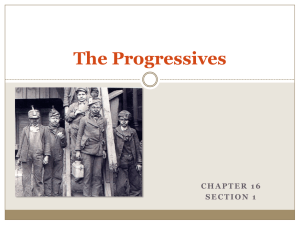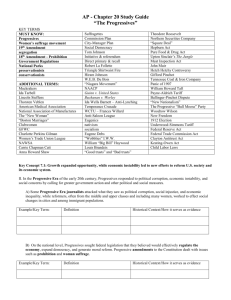Name:
advertisement
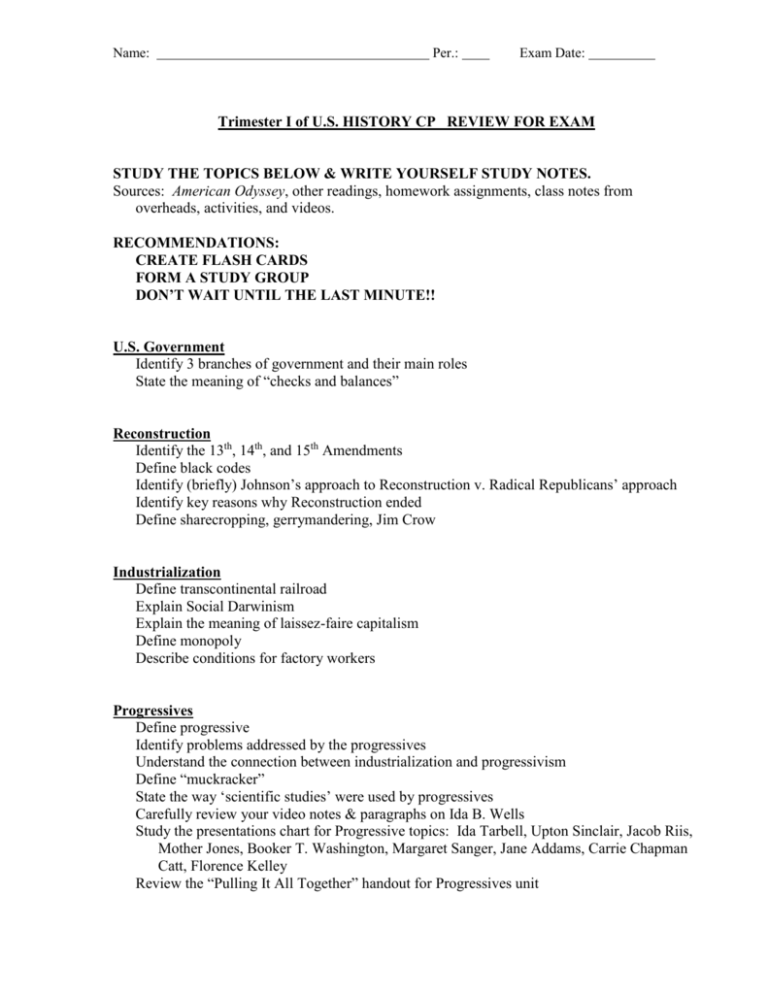
Name: Per.: Exam Date: Trimester I of U.S. HISTORY CP REVIEW FOR EXAM STUDY THE TOPICS BELOW & WRITE YOURSELF STUDY NOTES. Sources: American Odyssey, other readings, homework assignments, class notes from overheads, activities, and videos. RECOMMENDATIONS: CREATE FLASH CARDS FORM A STUDY GROUP DON’T WAIT UNTIL THE LAST MINUTE!! U.S. Government Identify 3 branches of government and their main roles State the meaning of “checks and balances” Reconstruction Identify the 13th, 14th, and 15th Amendments Define black codes Identify (briefly) Johnson’s approach to Reconstruction v. Radical Republicans’ approach Identify key reasons why Reconstruction ended Define sharecropping, gerrymandering, Jim Crow Industrialization Define transcontinental railroad Explain Social Darwinism Explain the meaning of laissez-faire capitalism Define monopoly Describe conditions for factory workers Progressives Define progressive Identify problems addressed by the progressives Understand the connection between industrialization and progressivism Define “muckracker” State the way ‘scientific studies’ were used by progressives Carefully review your video notes & paragraphs on Ida B. Wells Study the presentations chart for Progressive topics: Ida Tarbell, Upton Sinclair, Jacob Riis, Mother Jones, Booker T. Washington, Margaret Sanger, Jane Addams, Carrie Chapman Catt, Florence Kelley Review the “Pulling It All Together” handout for Progressives unit Imperialism Locate on a map: Puerto Rico, Cuba, Philippines, Hawaii, Panama, China Define ‘manifest destiny’ Describe (briefly) the Dawes Severalty Act of 1887 and government boarding schools Define imperialism Know the difference between “justification” and “motive” Explain the justifications given for U.S. imperialism (e.g., class notes & video) Explain the motives of the U.S. for its imperialist actions (e.g., class notes & video) Give reasons why people in the U.S. were ‘anti-imperialist’ Describe (briefly) the U.S.’s actions in Cuba, Puerto Rico & the Philippines, including: motives & justifications, the Maine, Spanish-American War, the Platt & Teller Amendments, and the struggle for independence in the Philippines after the SpanishAmerican War Define the Monroe Doctrine Define the Roosevelt Corollary Define “yellow journalism” Explain role of World’s Fairs Review your quote handout Be able to interpret a cartoon about imperialism World War I Identify the following on a map: Austria-Hungary, France, Germany, Great Britain, Italy, Ottoman Empire, and Russia Know the years: the war began in Europe, the U.S. entered the war & the war ended. Define: self-determination, alliance, neutrality, mobilization, draft Identify Triple Entente & Allies members, and Central Powers members Explain the 4 main causes of the war for European powers. Identify the significance of the assassination of Archduke Ferdinand Identify the 2 war fronts. Identify the significance of the Lusitania Explain the significance of the Zimmerman telegram Know why Russia left the war early Identify the new warfare technologies and their overall impact Describe WWI’s impact on the U.S. economy before the U.S. enters the war Describe the U.S’s official and unofficial position towards the war, before it entered it. Explain Wilson’s reasons for entering WWI Identify ways the U.S. mobilized for war. Define propaganda. Be able to give examples from the U.S. related to the war. Identify reasons why some Americans opposed the war. Explain the purpose and impact of the Espionage Act and the Sedition Amendment. Homefront: African Americans migration North & suffragettes protesting the war Describe the treatment of African Americans in the U.S. military. Wilson’s 14 Points, Treaty of Versailles, and the League of Nations
